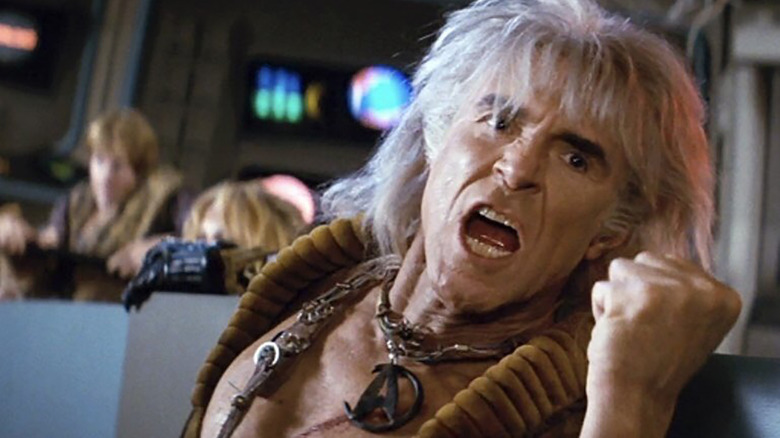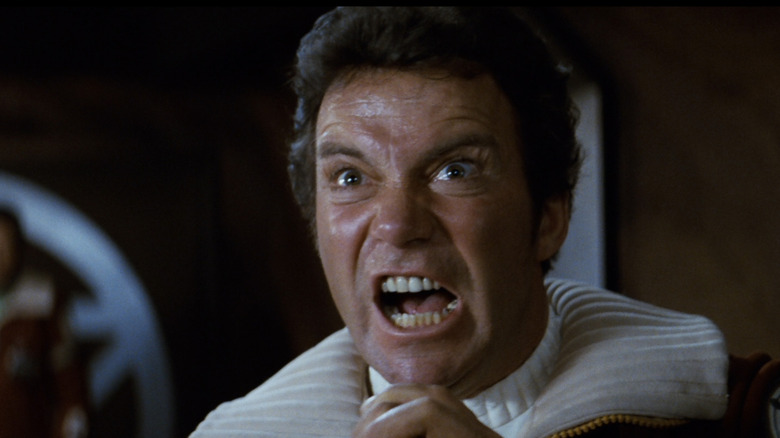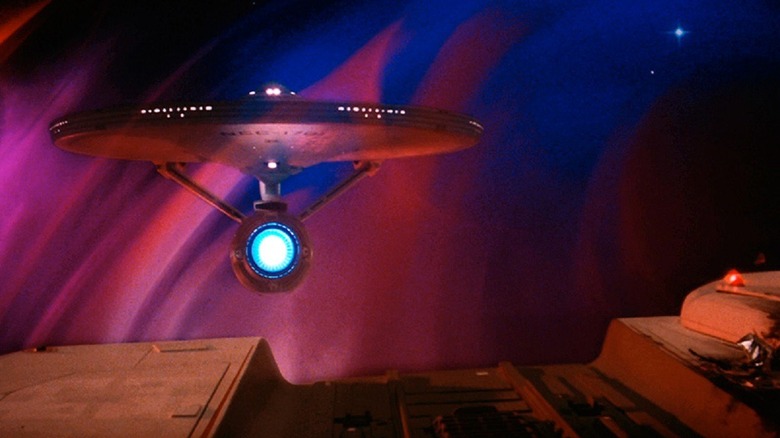French thinker Roland Barthes’ 1967 essay “The Loss of life of the Creator” argues the literary idea of separating the which means of a piece from the creator’s intention, primarily permitting for a reader’s private interpretation to supersede it. Given the plethora of disparate voices seen at present, made up {of professional} critics in addition to common viewers members, this idea has usually turn into broadly accepted, not less than inside motive. It is a a lot simpler factor to do in terms of tv and movie, given the truth that, auteur idea apart, these are creative mediums delivered to life by dozens or a whole lot of individuals, and never only one.
But pushing previous the clearly said intentions of the originator of a piece could be daunting, particularly when that creator appears to vary their thoughts about what these intentions are over time. That is precisely the scenario that Nicholas Meyer, Harve Bennett, and the remainder of the individuals who crafted “Star Trek II: The Wrath of Khan” discovered themselves in with “Star Trek” creator Gene Roddenberry whereas making their movie within the early Nineteen Eighties. Though the Roddenberry of the unique “Star Trek” TV sequence could have been completely tremendous with what Meyer and Bennett needed to do with the movie, the Roddenberry post-“Star Trek: The Movement Image” was a special man, and had grown to imagine that “Star Trek” must be trekking in a special path than the place it was going with others on the helm.
Briefly, he believed it ought to’ve been going his method. Years earlier than he ultimately succeeded in getting the franchise to observe his path with the beginning of “Star Trek: The Subsequent Technology,” Roddenberry had some selection phrases for the creatives accountable for “Khan,” and as Meyer just lately revealed, they weren’t significantly good phrases.
Meyer ‘blacked out’ Roddenberry’s vitriolic memos to him
By all accounts, the making of “The Wrath of Khan” was not the sleek crusing expertise one may hope for (though, when in comparison with the grief concerned in making “The Movement Image,” maybe it appears rosy). In a latest interview with TrekMovie, Meyer recalled how he needed to write a taking pictures script for the movie in simply 12 days to maintain every thing on schedule (particularly the visible results work from ILM) and make the already-planned launch date of June 4, 1982. After “taking pictures within the day and modifying all night time,” as he described it, the ultimate reduce of “The Wrath of Khan” simply barely made it to the end line intact. That it was any good, not to mention the very best “Star Trek” film ever made, is nothing in need of a minor miracle.
Given this tumultuous schedule, it is no shock that Meyer’s reminiscence of every thing that went down whereas making the movie is hazy some 42 years later. It appears that evidently the movie’s usually constructive reception and vastly influential legacy have allowed Meyer to principally bear in mind all the great facets of constructing the film, particularly how ecstatic many audiences have been upon seeing the movie for the primary time. What Meyer did not recall till this interview was that he’d had a bitter feud with Roddenberry throughout the movie, albeit one which appeared to play out wholly in memos:
“…folks requested me for years what was my interplay with Gene Roddenberry. And I stated, effectively, you met him. You needed to shake his hand and so forth, however he wasn’t a part of making the film, which was actually true. However once I went again to my alma mater, the College of Iowa in Iowa Metropolis, I went to the library the place they’ve all my papers, and I used to be surprised to see an change of memoranda between me and Gene Roddenberry that I had completely blocked out. As soon as I learn them, I perceive why I blocked them. It was very poisonous, very venomous. He hated the script. I suppose I did not know any higher, so I used to be intemperate. I responded intemperately. And I had simply blocked all reminiscence of this.”
How Wrath of Khan gave Star Trek followers what they wanted, not what they needed
A breakdown of precisely why Roddenberry was so upset over the script for “The Wrath of Khan” could be present in this piece by /Movie’s Witney Seibold, suffice to say that Roddenberry wasn’t happy with the extra adventure-oriented path the movie went in. As I discussed earlier, this could possible not have been an issue for Roddenberry throughout the making of the TV sequence, and for a few causes. For one, quite a few episodes of the present have been very adventure-oriented, together with “Stability of Terror,” which, like “Wrath of Khan,” was instantly impressed by 1957’s “The Enemy Under.” For an additional, Roddenberry hadn’t but fallen below the affect of the large throng of Trekkers (Trekkies for those who’re nasty), “Star Trek” followers and their teams who have been an influential a part of maintaining the sequence on the air and bringing it again to life.
We all know now, in 2024, how damaging fandoms could be to artwork and tradition; if nothing else, they seem to be a sterling instance of why artwork ought to by no means be made by committee. Again within the ’70s and ’80s, nonetheless, they have been a comparatively new affect, demonstrating to studios and creators alike how they might assist make or break a franchise. With all of the discussions Roddenberry had with these followers, he started to get the notion that “Star Trek” ought to distinguish itself from style traditions, utilizing its built-in idea of a utopian, progressive future society to additional concepts of battle avoidance, diplomacy, collaboration between teams, and so forth. These are all noble objectives, however they do not simply make for good drama. Whereas Roddenberry’s imaginative and prescient of a brand new “Star Trek” would ultimately turn into higher honed, permitting for the franchise to thrive to this present day, it had some rising pains, felt most keenly throughout the making of “The Movement Image” and “Khan.”
What Meyer, Bennett, and the remainder of the makers of “Khan” have been doing was following a number of the core tenets of drama, making artistic selections that solely sounded doubtlessly dissatisfying on paper however, when executed on the extent of greatness (as they ended up being), turned out improbable. Chief amongst these selections was the demise of Spock (Leonard Nimoy), a selection that Roddenberry tried to stoke the fires of fandom in opposition to, however which proved to be an iconic second in “Star Trek” and movie historical past. What the lesson of “Loss of life of the Creator” actually is does not contain a “proper” or a “unsuitable” interpretation of a piece. As an alternative, it is about liberating oneself from objectivity in artwork: you by no means know for certain till you attempt it for your self.


